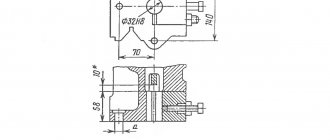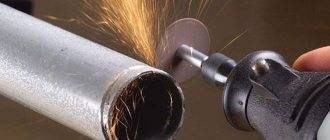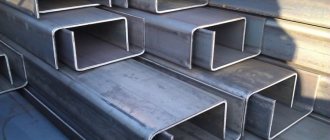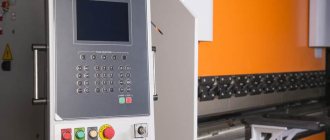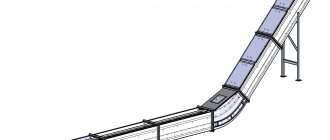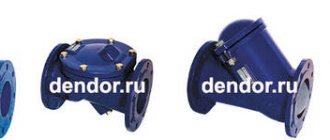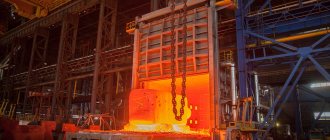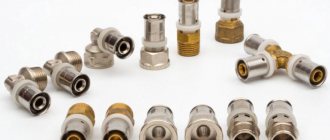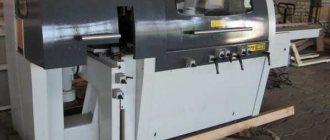Buy a press for waste paper (cardboard and paper) at affordable prices in Moscow and Novosibirsk.
At various recycling collection points, as well as in industries with a large amount of solid waste, the issue of proper waste treatment is dominant. Here it is important to ensure not only fast processing of raw materials, but also their convenient storage, as well as inexpensive transportation. Special machines - pressing units for paper and cardboard PGP - help solve these problems with the greatest efficiency. They facilitate the processing of solid waste and make it less expensive, allowing you to reduce disposal costs by several (up to 10) times.
Types of presses
Presses for waste paper come in a wide variety of sizes, performance, and operating principles. There are mini-installations, medium-sized equipment and large industrial models, mobile or stationary.
Based on the design and method of pressing, the following types of presses are distinguished:
- mechanical;
- hydraulic;
- hydromechanical;
- baling
Mechanical press for waste paper
This installation operates using a screw drive, which can be electromechanical or manual. The press force is in the range of 4–32 tons.
Type and dimensions of a mechanical press for waste paper
The manual screw press operates using the energy of a large flywheel, which is accelerated by hand. The maximum pressing force in such presses is determined by the diameter of the flywheel and its height. The thread on the screw is self-locking and multi-pass.
The screw press is made vertically with a cast iron frame and a nut made of antifriction bronze.
In a mechanically driven screw press, the nut rotates using an electric motor and a gear or V-belt drive.
The disadvantage of such designs is the need to install torque overload protection. At the end of pressing the fuse should trip.
The advantages are small size and weight. Some models can be installed outdoors.
Hydraulic paper press
The installation has become more widespread, despite the fact that it is larger than the mechanical one. The equipment includes a pumping unit, an ejection mechanism and a control system. The working part is sliders and hydraulic cylinders. The working fluid is distilled from the lower cavity of the cylinder to the upper.
Pressing is carried out with a force of 2.5–3 atmospheres according to the pressure gauge.
Hydraulic presses are:
- with manual control;
- semi-automatic;
- automatic.
Hydromechanical presses for waste paper
The devices consist of a hydraulic cylinder and a lever mechanism. They are distinguished by the fact that at the end of the movement of the plate, the speed decreases, and the press force increases many times, as well as by economical energy consumption.
Baling press
The automatic press has a horizontal layout. The unit pushes the finished package out of the working area and creates a knot for dressing.
Types of equipment
Waste paper compactors are divided into different types according to a number of parameters:
- design;
- download type;
- degree of pressure created;
- cross-sectional shape of the loading chamber.
Different models of baling presses for waste paper also differ from each other in their dimensions. So, depending on this parameter, they distinguish:
- mini compactors for paper waste;
- standard category pressing equipment;
- large-sized machines belonging to the professional category.
Waste paper collection point equipped with hydraulic balers
According to their design, the following devices are distinguished:
- hydraulic press for waste paper;
- mechanical press for waste paper;
- hydromechanical cardboard and paper compactor.
Depending on the loading scheme used, there are:
- horizontal press for waste paper;
- vertical press for waste paper;
- cardboard compactor with corner loading.
Vertical loading is most often used in large presses designed to process tens of tons of waste paper
The most common type of loading used in paper and cardboard briquetting presses is vertical. The vast majority of mini-presses, as well as standard pressing equipment, are equipped with vertical loading devices. Vertical pressing machines, due to their design features, are more compact than horizontal ones, which makes the implementation of such a loading scheme more appropriate in many cases.
A press for cardboard and waste paper, which implements horizontal loading, is a large-sized and powerful machine that operates uninterruptedly and is often built into conveyor lines. Often, the operation of horizontal industrial pressing equipment is controlled by an automatic system.
Mobile mobile complex for pressing waste paper and film
Based on the degree of mobility, presses for working with waste paper and other solid household waste are divided into stationary and mobile. A stationary press for briquetting waste paper, PET bottles and any other type of waste, as its name suggests, is mounted in a specific location and is used primarily in industrial conditions. Presses of this type briquet large volumes of recyclable materials, so the use of this expensive equipment is advisable for enterprises involved in the collection and processing of waste paper at a professional level. Many models of such devices have the function of packaging briquetted raw materials, and to control their operation, an automatic module present in their design is used.
A mobile press for waste paper is, as a rule, a compact mini-device that is easily moved, which allows it to be used for pressing waste paper exactly where it is needed at the moment.
Stationary
Stationary presses, which are used to briquet waste paper, PET bottles, and also press other types of recyclable materials, are used to equip enterprises engaged in:
- production of printed products;
- provision of warehouse services;
- acceptance and processing of secondary raw materials.
A stationary semi-automatic horizontal press with vertical loading is designed for pressing porous, bulky and “acting” materials
This press is also used in other enterprises characterized by the constant presence of large amounts of waste of various types.
The most significant characteristics of stationary machines are:
- quite large sizes;
- high performance;
- ability to create significant pressure;
- high functionality (many of the devices of this type can perform packaging functions).
Stationary presses are used at collection points, waste sorting complexes, warehouses and solid waste landfills
Mobile
The mobile mini-device does not require attachment to a horizontal surface, which makes it possible to easily move and install such a press with your own hands to any place where its use is needed at the moment. Naturally, such mini-devices are not capable of providing high briquetting performance, and are also not able to form briquettes from high-density waste paper.
Mobile waste paper presses are, as a rule, vertical equipment that is used in such areas as:
- collection and removal of waste paper purchased from organizations and individuals;
- trade carried out through chains of stores and supermarkets;
- collection and recycling of secondary raw materials in small volumes.
Based on small-sized presses, mobile recycling and waste complexes can be created, consisting of a hydraulic press, trailer and gasoline generator
Hydraulic
A hydraulic press, with which you can briquet paper and cardboard, as well as press PET bottles, rubber and plastic waste, is the main type of equipment for this purpose. Many models of hydraulic press allow you to batch the briquettes being formed.
Hydraulic pressing machines used for briquetting waste paper, plastic bottles and other types of solid waste are divided into different categories according to a number of parameters:
- sizes;
- the speed at which the press plates or slides move;
- the pressure value with which the elements of the hydraulic system act on the pressed raw materials.
The vertical hydraulic baler takes up little space and is suitable for businesses with small waste volumes
Hydraulic press baling equipment also differs in its control method, depending on which it can be one of the following types:
- fully automatic devices;
- semi-automatic machines;
- manually operated equipment.
Mechanical
The simplest in design are waste paper presses of the mechanical type, which are also called manual. Let us list the distinctive features of mechanical presses for waste paper.
- Such machines are characterized by small dimensions.
- Small briquettes are formed using a mechanical press.
- A manual compactor can provide a fairly high briquetting speed.
- Manual presses create a low compression force of the pressed raw materials.
Mechanical press for cardboard, paper, PET and film
According to the type of drive that ensures the creation of force exerted on the pressed raw materials, a manual press can be:
- screw type;
- with rotary drive;
- eccentric;
- with crankshaft drive.
The use of a manual press for cardboard and paper waste, which is not characterized by high productivity, is advisable when the volumes of briquetted raw materials are not too large. In other cases, it is better to give preference to more productive press baling equipment.
Such a press can develop a force of 6 tons and output a bale measuring 800x500x500 mm
Hydromechanical
The drive unit of hydromechanical type waste paper presses has hydraulic and mechanical elements, which are a hydraulic cylinder and a lever mechanism. Let's look at the distinctive features of this type of equipment.
- At the very beginning of pressing, the work plate moves quickly and creates a small compression force.
- Before the briquetting process is completed, the work plate begins to move more slowly, but creates a significant compressive force.
- Hydromechanical devices allow pressing to be performed with less energy consumption.
Using a hydromechanical pressing machine, you can not only work with papers and cardboard, but also successfully briquet other waste, even if such waste contains fairly solid inclusions.
Volumes of processed raw materials
The simplest presses, which compact only light materials such as paper and cardboard, create a pressure force of 4 to 10 tons.
Presses with an average pressure of 10 to 15 tons can process thermoplastic products.
Presses with high pressure forces of up to 30 tons even compact sheet metal products. Their cost is high, so an economic justification is necessary when purchasing such a unit.
What volumes and types of materials are expected?
The purpose of use determines the extent and type of material processed. Thus, for pressing waste from small-scale production, mainly consisting of paper and cardboard, and for a specialized line for recycling waste paper, presses of various capacities and purposes are suitable. For example, a device with a force of 4 tons is suitable primarily for processing paper waste in small volumes. But if you come across PET among the waste, you should choose a more powerful model - from 8 tons.
Equipment dimensions
The size of the presses directly depends on the volume of waste paper or other waste that needs to be processed. By size, the equipment is divided into the following formats:
- mini;
- standard;
- professional.
Mini. Such presses do not require attachment to a surface; they are easy to move and easy to operate. The volume of waste paper in such a unit is reduced by only 3 times, its productivity is low. It is quite suitable for home use by individuals, small offices, and trade market pavilions.
Hydraulic mini-presses for waste paper
Standard. Intended for:
- warehouses;
- points accepting waste paper;
- shops;
- companies working with large volumes of papers.
These units require strong attachment to a horizontal surface. The pressure they create makes it possible to reduce the volume of waste paper by five times.
Foot control installation drawing
Professional. Designed for printing enterprises, complexes of large warehouses with a huge flow of paper and cardboard waste. After pressing, this waste is reduced in volume by 10 times or more. The applied force is 30 tons. Installation of such an industrial press and its maintenance are carried out only by qualified personnel. Installation requires a room with certain dimensions, spacious and high.
How much device bandwidth is needed?
This parameter depends on the planned volume of waste or waste received for recycling. Thus, the compact waste press PGP-4 mini with a force of 4 tons is capable of processing up to 120 kg per hour (960 kg per eight-hour shift). Such equipment may suit a facility with a small waste stream. The four-ton waste paper press PGP-4 has twice the productivity and is capable of processing up to 2 tons (1920 kg) of paper and cardboard per shift.
High-volume waste recycling lines will require higher-capacity cardboard presses. For example, it is worth paying attention to the GGP-24M with a 24-ton force; such a device copes with 7 tons of waste in one work shift.
The performance of pressing devices depends on a number of parameters:
- type of drive;
- working chamber size;
- speed of the pressing cycle.
Drive unit
The market offers entrepreneurs pressing equipment with manual, electromechanical and hydraulic drive types. The first one is the most reliable and cheapest. However, it is also the slowest and also requires more effort from the operator. This means that the productivity of such a press is minimal.
The second most efficient is electromechanical. It operates using the power of an electric motor transmitted by a gearbox. It is less reliable, like any electrical equipment, but it is faster and requires significantly less labor.
Hydraulics are capable of developing much greater force than a propeller. In addition, the cycle speed of such equipment is significantly higher. With equal parameters, the hydraulic device will show significantly greater productivity. Moreover, its reliability exceeds that of an electromechanical device.
Classification of equipment according to the method of loading raw materials
Methods for loading waste vary between different types of presses and can be:
- vertical;
- horizontal;
- corner.
Mini and Standard equipment mainly includes vertical presses.
Professional presses include horizontal hydraulic presses for waste. They can compress not only paper waste, but also compress recyclables: solid household waste, plastic bottles, etc.
Waste paper press control
The waste pressing process is controlled using a special lever. The lever drives the pressing slides. They can be stopped at any time by blocking. The pressure is controlled by readings from pressure gauges.
Management is carried out by one person and does not require special knowledge and skills.
Unit parts require constant lubrication, especially during frequent operation.
Manufacturer
The Russian market offers pressing equipment of domestic, Chinese and European origin.
- China. According to established tradition, models from China are considered to be of low quality, but at the same time inexpensive. Frankly speaking, there are also very worthy specimens, only in this case their cost is significantly higher.
- EU. Manufactured under strict control and within the framework of EU legislation, European presses are reliable, durable, productive, but, as a rule, they have a significant drawback (especially for a start-up business) - high cost. In addition, they are expensive and often difficult to maintain, requiring qualified specialists.
- RF. Russian units are distinguished by proven reliability, decent prices and a high degree of maintainability. Their maintenance is very inexpensive, and the simplicity of the design and the absence of unnecessary parts and functions reduce the likelihood of breakdowns and do not require the involvement of highly qualified specialists.
How to choose a press
Press for forming paper fuel briquettes
When choosing a waste paper press, you need to keep in mind that its price directly depends on its productivity, pressure and other technical characteristics.
You need to focus, first of all, on the volume of required processing. Based on this, the required productivity and capacity of the working chamber are selected.
The power consumption and dimensions of the installation are of no small importance.
For small needs, compact models are preferred. They can be installed in a small room and even in a waste paper removal machine.
Some installations can compress textile and plastic products into bales: disposable tableware, bottles. Such equipment will help to recycle and remove waste much faster and easier.
The most popular equipment models
A wide range of hydraulic presses for waste paper are produced in Arzamas.
The offered models are equipped with systems for automatic unloading of finished compressed bales. Individual elements of these systems are developed in Italy, and precision automation elements are produced in France.
This equipment works reliably in any conditions, even in the absence of heating in the room in which it is installed and at sub-zero temperatures.
Vertical presses produce bales with the following mass:
- up to 200 kg on small presses;
- up to 350 kg on medium presses;
- up to 600 kg on large presses.
This suggests that any consumer can make a choice for themselves.
Horizontal hydraulic presses have significantly higher productivity. In addition to paper waste, they are used for compacting municipal solid waste, plastic, and aluminum cans. They are characterized by fast and efficient loading from above, there is no need to level the layer. The bale is formed after 5–6 loads and has a high density.
Recycling waste paper using hydraulic horizontal presses
Horizontal hydraulic presses of the Mega series with a conveyor installation have the following characteristics:
- weight of the compressed bale - 200–650 kg;
- package size - from 1000x800 to 2100x800 mm;
- the working stroke of the traverse is from 1600 to 3300 mm.
Popular models are the following:
GGP-2 mini with vertical loading. Dimensions: 200x64x42 cm. The size of the finished briquettes is 50x40x35 cm, processes up to 500 kg of raw materials per day, applied force is 2 tons.
Barinel 1500LP6 top loading. Dimensions: 160x56x67 cm. The size of the finished briquettes is 50x50x50 cm, the applied force is 6 tons, produces up to 5 briquettes per hour weighing up to 30 kg each.
DIY waste paper press
You can make the simplest equipment for making briquettes from paper waste yourself, using device drawings that are easy to find on the Internet. For design, it is necessary to specify the dimensions of the installation, the desired stroke of the traverse and the permissible pressure force.
Based on the size of the chamber for pressing waste paper and the desired press force, a conventional hydraulic jack is selected, which will serve as a pressure device. The traverse will move in a direction depending on the location of the jack. More convenient is the upper layout of the jack, in which the traverse moves downwards.
Examples of press drawings for DIY assembly
Manufacturing of bed and jack
To construct the frame, thick sheet material is used from high-quality construction steel 12 GS, manufactured in accordance with GOST 19282. Frame elements made from such steel are better welded. The bed is a rectangular closed frame.
The capabilities of the jack are determined by the dimensions of the frame and traverse. The traverse must have free idling. This is necessary so that waste can be loaded. After creating a package of waste paper, the traverse should return to its original position. To do this, the design includes two springs, which are arranged symmetrically.
Diagram of a lever press driven by a hydraulic jack
Control system installation
At the last stage, the electrical drive control system is installed. Most often it consists of two buttons, as the simplest option.
In terms of the level of force developed (up to 120 kN), homemade waste paper presses are not inferior to purchased ready-made models of such equipment.
Another example of a drawing of a homemade waste paper press
DIY mechanical press
If you do not have the ability to operate machines, you can order the necessary parts from a turner.
Tools and equipment
To make the device you will need the following:
- Bulgarian
- drill
- welding machine
- screwdriver
- milling and lathe
- steel sheets
- bolts, nuts
- corners
Manufacturing and use
- The basis of the press is a frame made of corners, which is sheathed with metal sheets.
- From four metal corners or bars 80 cm long and four 60 cm long, fastened together, make two rectangles, which will be the lower and upper parts of the box.
- Metal rectangles are held together using vertical beams.
- The resulting box is sheathed with metal sheets and reinforced with transverse beams.
- A door is attached to one side of the structure through which the compressed paper briquettes will be removed.
- Next, you need to make a piston. To do this, metal channels 45-50 cm are connected to each other by welding from the sides. The finished piston should be reinforced with a beam.
- Weld a flange in the central part of the beam and insert a threaded rod into it.
- To form the final part of the frame, two channels or metal beams 10 cm long must be attached to the opposite long sides of the main box.
- In the upper part, on the sides of the channels, attach a couple of beams, between them place a bearing in a cage where the threaded rod will be located, then secure it to the piston flange.
- When the structure is assembled, a washer should be put on the rod, then a nut, which will set the piston in motion. The nut can be rotated using a lever.
Before using the press, moisten it with water and load a pile of waste paper into the device. Then set the piston in motion. Remove the material compressed under pressure and dry it.
A fairly simple method of using the design will help recycle paper waste even in a small room.
Advantages of a waste paper press
Beginning entrepreneurs and businessmen need to think in a timely manner about what they will do with paper waste, which literally “eats up” the useful space of offices and warehouses.
A waste paper press will help solve the waste problem, because its main function is to compress waste paper into dense bales, which are more convenient to store and transport.
Choosing a suitable installation is not difficult; the choice is very large. And if over time the unit turns out to be unnecessary for some reason, it can be rented out or sold at a profit.
